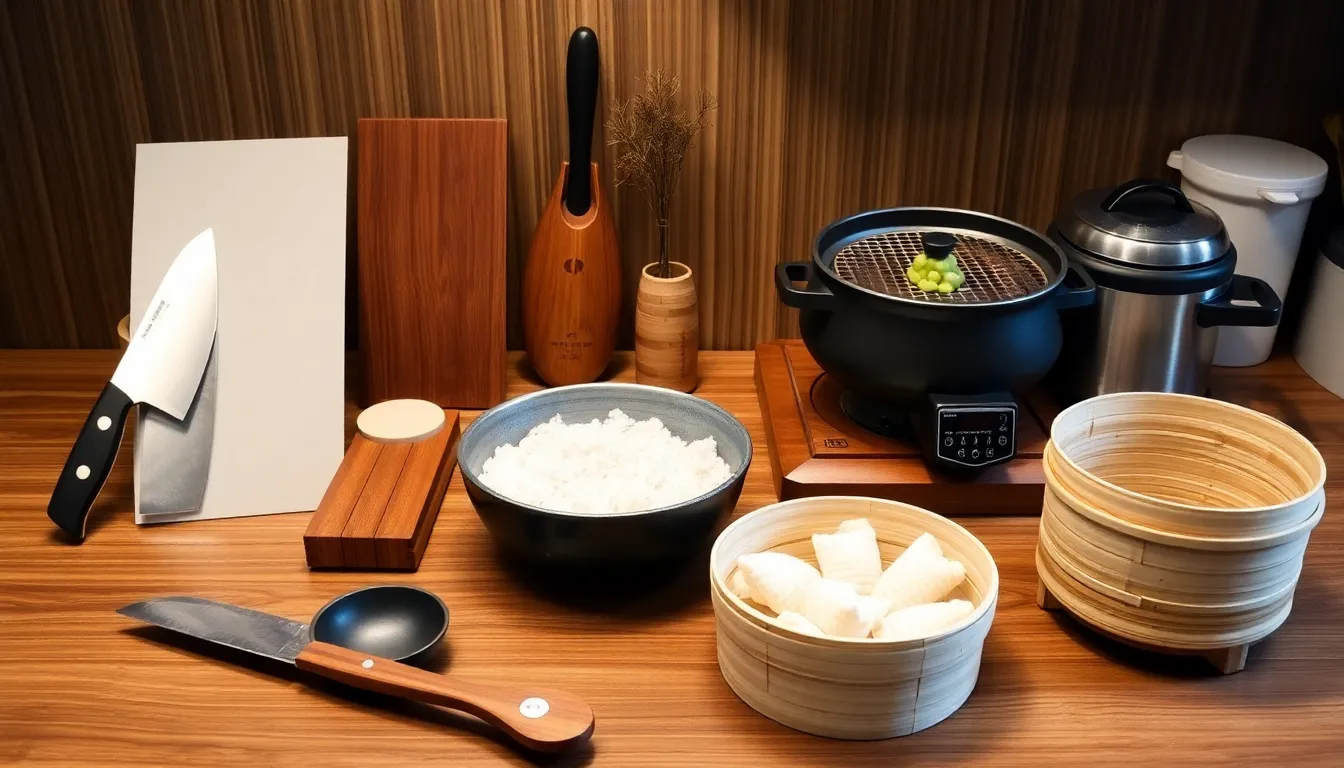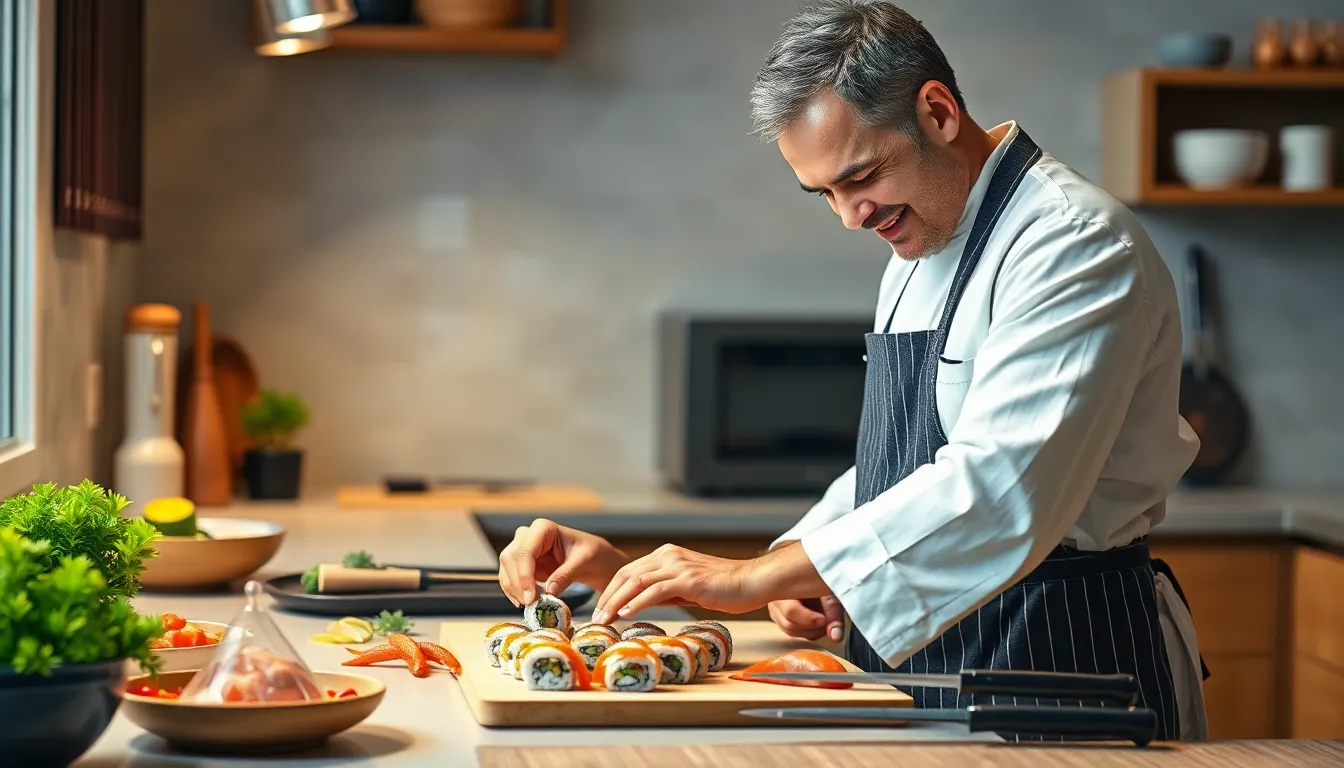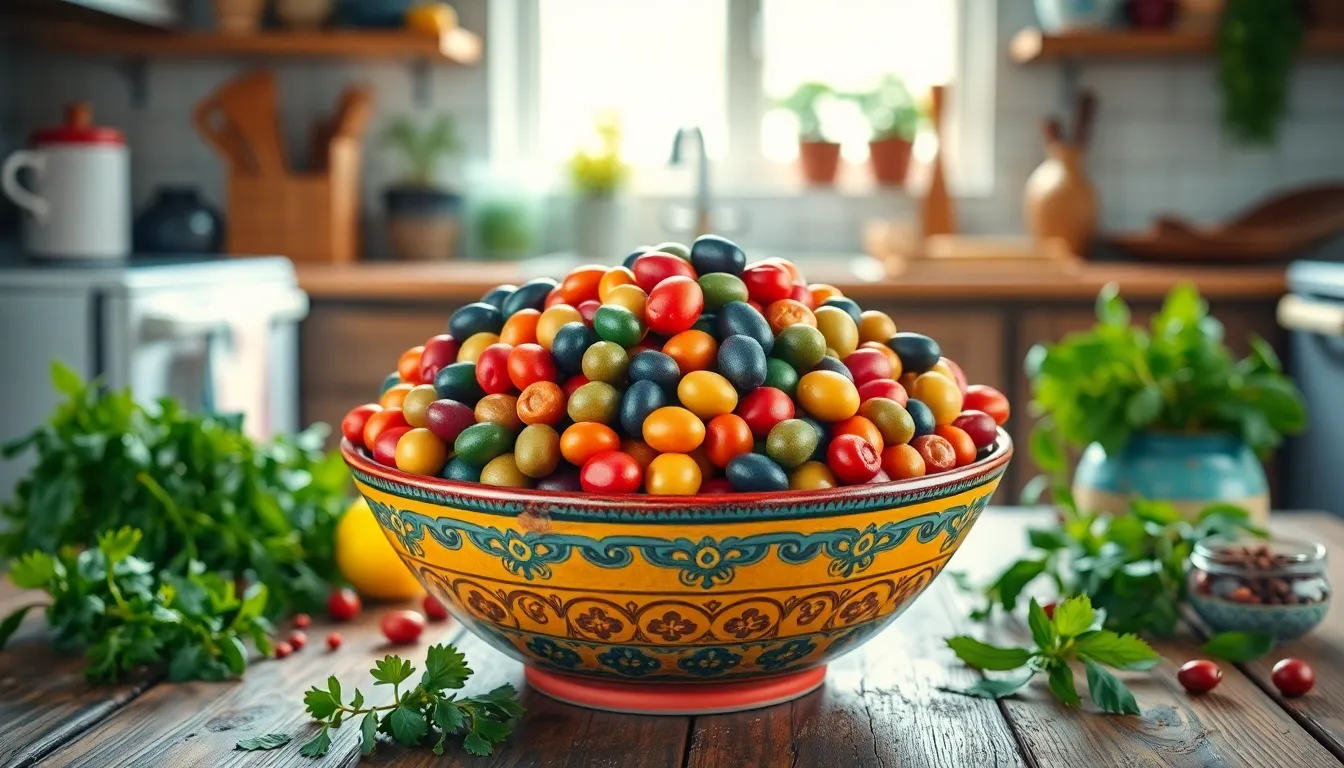Japanese cooking techniques are like a secret treasure map leading to culinary nirvana. From the precision of sushi rolling to the artful dance of tempura frying, these methods transform simple ingredients into mouthwatering masterpieces. If you think cooking is just about throwing things in a pot, think again!
Imagine mastering the delicate balance of flavors and textures that make Japanese cuisine so revered. Whether it’s the umami-rich broth of ramen or the perfectly grilled yakitori, these techniques will have your taste buds doing a happy dance. So grab your chopsticks and get ready to dive into a world where cooking becomes an art form, and every meal is a celebration.
Table of Contents
ToggleOverview Of Japanese Cooking Techniques
Japanese cooking techniques emphasize precision and balance. Techniques such as grilling, steaming, and frying contribute to the unique flavors and textures characteristic of Japanese cuisine.
Sushi preparation highlights the importance of rice cooking and raw fish handling. Chefs learn to control temperature and seasoning, ensuring every component enhances the dish.
Tempura illustrates the art of frying, where ingredients are coated in a light batter. This quick cooking method retains the fresh taste and crunch of vegetables or seafood.
Ramen showcases noodle preparation, broth making, and ingredient layering. Each ramen chef develops specialized skills, focusing on the harmony of flavors and textures.
Yakitori involves grilling skewered chicken over charcoal. This method infuses a smoky flavor, while the precise control of temperature produces tender, juicy meat.
Steaming plays a role in dishes like chawanmushi, a savory egg custard. This gentle technique preserves ingredients’ natural flavors and nutrients.
Fermentation is another crucial aspect, seen in products like soy sauce and miso. Mastering fermentation requires time and careful monitoring for optimal flavor development.
Japanese cooking also values presentation. Techniques include arranging food artfully on plates, enhancing visual appeal.
These cooking methods create not just meals but experiences. They invite appreciation for the artistry involved and the cultural significance of each dish.
Essential Japanese Cooking Tools

Japanese cooking relies on a variety of essential tools to achieve authentic flavors and presentation. Familiarity with these instruments enhances culinary techniques and brings dishes to life.
Knives and Cutting Tools
Japanese knives stand out for their sharpness and precision. A santoku knife, designed for versatility, handles slicing, dicing, and mincing tasks effectively. The yanagiba knife excels in slicing raw fish, essential for sushi preparation. Additionally, a usuba knife specializes in cutting vegetables, allowing for intricate presentation. Each knife requires proper care and maintenance to preserve its functionality.
Cooking Equipment
Specific cooking equipment plays a vital role in Japanese kitchens. A donabe, a traditional earthenware pot, is perfect for stews and rice dishes. Using a teppanyaki grill enhances the enjoyment of grilled meats and vegetables. An electric rice cooker ensures precise cooking for fluffy rice, a cornerstone of Japanese meals. Steamers made from bamboo or metal efficiently prepare dim sum and chawanmushi, ensuring flavors remain intact. Finally, a heavy cast-iron skillet provides even heat distribution for frying and sautéing, crucial for dishes like tempura and yakitori.
Fundamental Techniques in Japanese Cooking
Japanese cooking techniques emphasize precision, balance, and artistry in each dish. Various methods create unique flavors and textures that define this cuisine.
Rice Cooking Methods
Cooking rice is fundamental in Japanese cuisine, making it essential for dishes like sushi and donburi. The short-grain Japonica rice provides a sticky texture ideal for forming sushi. Proper washing removes excess starch, ensuring the rice cooks evenly. Different methods exist, including electric rice cookers for convenience and traditional pot cooking for a more authentic texture. Once cooked, letting the rice rest is crucial for achieving the perfect fluffiness, enhancing the overall flavor profile.
Sous Vide and Steaming
Sous vide provides precision cooking, allowing for control over temperature and timing. This technique ensures even cooking, enhancing tenderness in proteins and vegetables while preserving flavors. Steaming, another vital method, retains nutrients in vegetables and seafood. Using a bamboo steamer infuses a subtle fragrance from the wood. Chawanmushi, a savory egg custard, exemplifies the delicate texture and taste achieved through steaming, showcasing the importance of this technique in Japanese cooking.
Broiling and Grilling
Broiling brings a depth of flavor to ingredients, particularly proteins. It caramelizes sugars, creating a rich taste while maintaining moisture. Grilling, especially through yakitori, provides a smoky essence that enhances the dish. Skewered chicken cooked over charcoal achieves a charred exterior, adding complexity to the flavor. Both methods require attention to heat levels, allowing for a perfect sear while preventing dryness, making them indispensable in Japanese cooking.
Flavor Building Techniques
Japanese cuisine relies heavily on flavor-building techniques that enhance the taste and depth of each dish. Focusing on simplicity, these methods elevate ingredients while preserving their essence.
Dashi Preparation
Dashi serves as the foundation of many Japanese dishes, embodying umami. Essential ingredients include kombu (dried seaweed) and katsuobushi (smoked bonito flakes), each contributing unique flavors. To prepare dashi, soaking kombu in water brings out its natural flavors. A gentle heat helps to extract the essence, followed by adding katsuobushi for a brief infusion. Straining the mixture results in a clear, flavorful broth that enhances soups, sauces, and rice dishes. This basic stock showcases the importance of fresh, high-quality ingredients, emphasizing how they shape overall taste.
Marinades and Sauces
Marinades and sauces play a pivotal role in enhancing flavors in Japanese cooking. Classic examples include teriyaki sauce and ponzu, each offering distinct taste profiles. Teriyaki sauce combines soy sauce, mirin, and sugar, creating a sweet yet savory glaze ideal for grilling meats. On the other hand, ponzu features a citrusy tang with soy sauce and rice vinegar, perfect as a dipping sauce or dressing. These condiments add complexity and depth to various dishes, transforming simple ingredients into flavorful meals. Incorporating these sauces into different recipes showcases their versatility and highlights the role of balance in Japanese cuisine.
Presentation and Plating in Japanese Cuisine
Presentation plays a vital role in Japanese cuisine, transforming food into an art form. Dishes are often arranged in a way that highlights seasonal ingredients and colors. A minimalist approach emphasizes simplicity, allowing the food’s natural beauty to shine.
Plating techniques vary widely, with each style reflecting the cultural significance of the dish. For instance, sushi is neatly arranged on wooden boards, showcasing the vibrant colors of raw fish against the white rice. Tempura is artfully stacked, maintaining the crispiness of the batter and the shape of the vegetables and seafood.
Ceramics and dishware are also crucial for enhancing presentation. Traditional plates, such as kaiseki, are specifically designed to complement the meal, emphasizing seasonal themes. Vibrant colors and intricate patterns enhance visual appeal while also embodying cultural heritage.
Garnishing adds an extra layer of sophistication. Edible flowers, microgreens, and finely sliced vegetables often serve as garnishes, enhancing texture and color. Layering ingredients thoughtfully creates visual depth, guiding the diner’s eye across the plate.
Attention to detail is paramount in Japanese plating. Chefs pay close attention to balance and harmony, ensuring that each element of the dish interacts beautifully with others. This meticulousness reflects the philosophy of “ichijū-sansai,” meaning one soup and three side dishes.
Dining experiences in Japan extend beyond taste. A well-presented meal invites appreciation, making each bite not only delicious but visually memorable. As a result, the art of plating becomes an integral part of Japanese culinary techniques.
Japanese cooking techniques embody a unique blend of artistry and precision that transforms everyday ingredients into extraordinary culinary experiences. By mastering methods like sushi preparation, tempura frying, and ramen crafting, chefs create dishes that celebrate flavor and texture. The significance of tools such as sharp knives and specialized cookware cannot be understated in achieving authentic results.
Moreover, the emphasis on presentation elevates meals into visual masterpieces that reflect cultural heritage. Each dish tells a story through its arrangement and garnishing, inviting diners to appreciate the beauty of Japanese cuisine. With a focus on balance and simplicity, these techniques not only enhance taste but also honor the philosophy that every meal is a celebration of life and craftsmanship.




